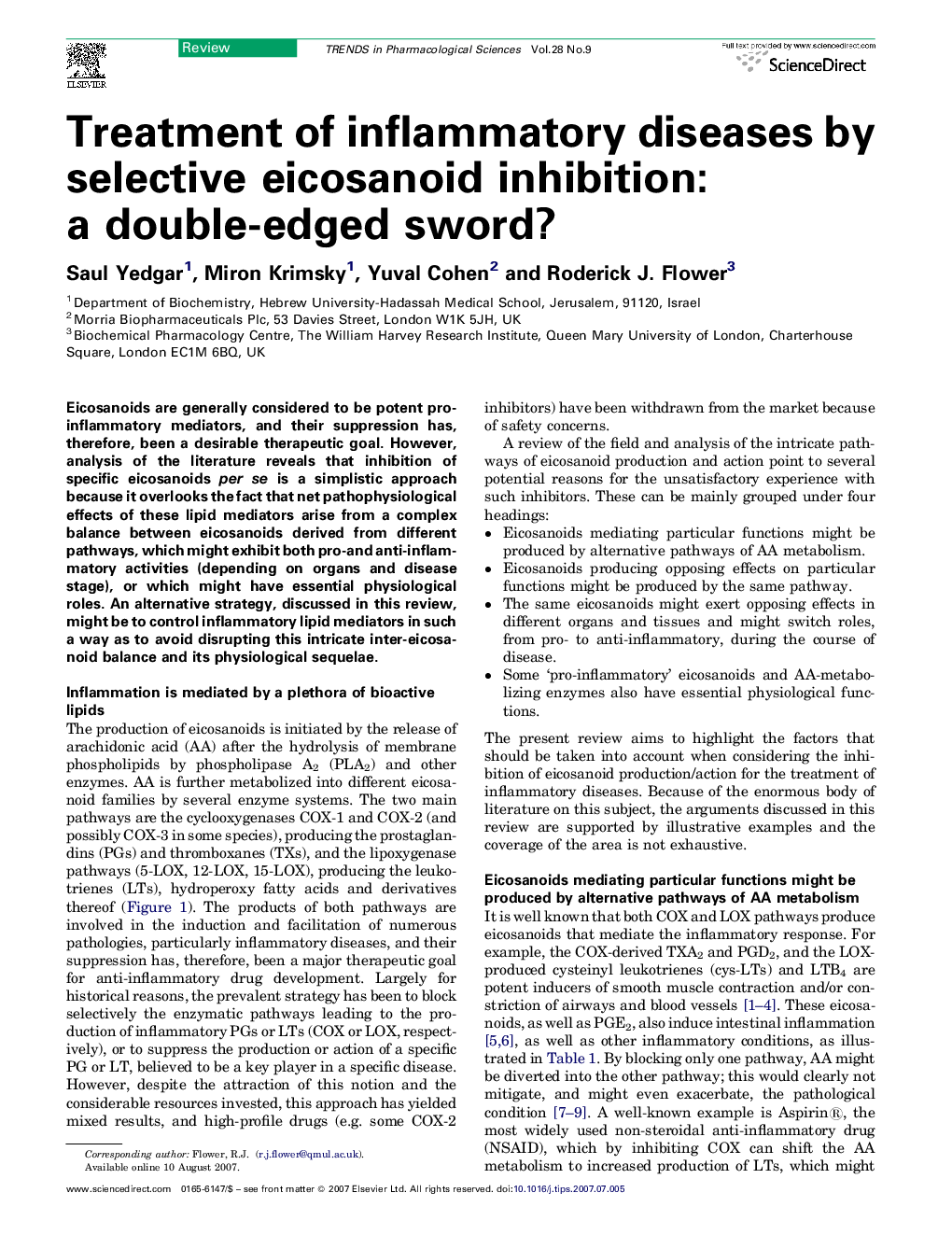| Article ID | Journal | Published Year | Pages | File Type |
|---|---|---|---|---|
| 2573591 | Trends in Pharmacological Sciences | 2007 | 6 Pages |
Eicosanoids are generally considered to be potent pro-inflammatory mediators, and their suppression has, therefore, been a desirable therapeutic goal. However, analysis of the literature reveals that inhibition of specific eicosanoids per se is a simplistic approach because it overlooks the fact that net pathophysiological effects of these lipid mediators arise from a complex balance between eicosanoids derived from different pathways, which might exhibit both pro-and anti-inflammatory activities (depending on organs and disease stage), or which might have essential physiological roles. An alternative strategy, discussed in this review, might be to control inflammatory lipid mediators in such a way as to avoid disrupting this intricate inter-eicosanoid balance and its physiological sequelae.
